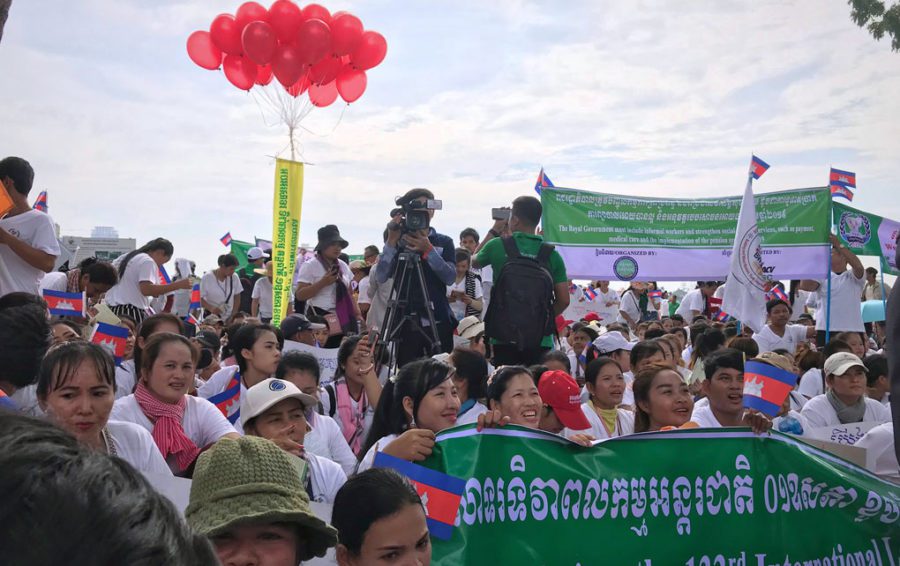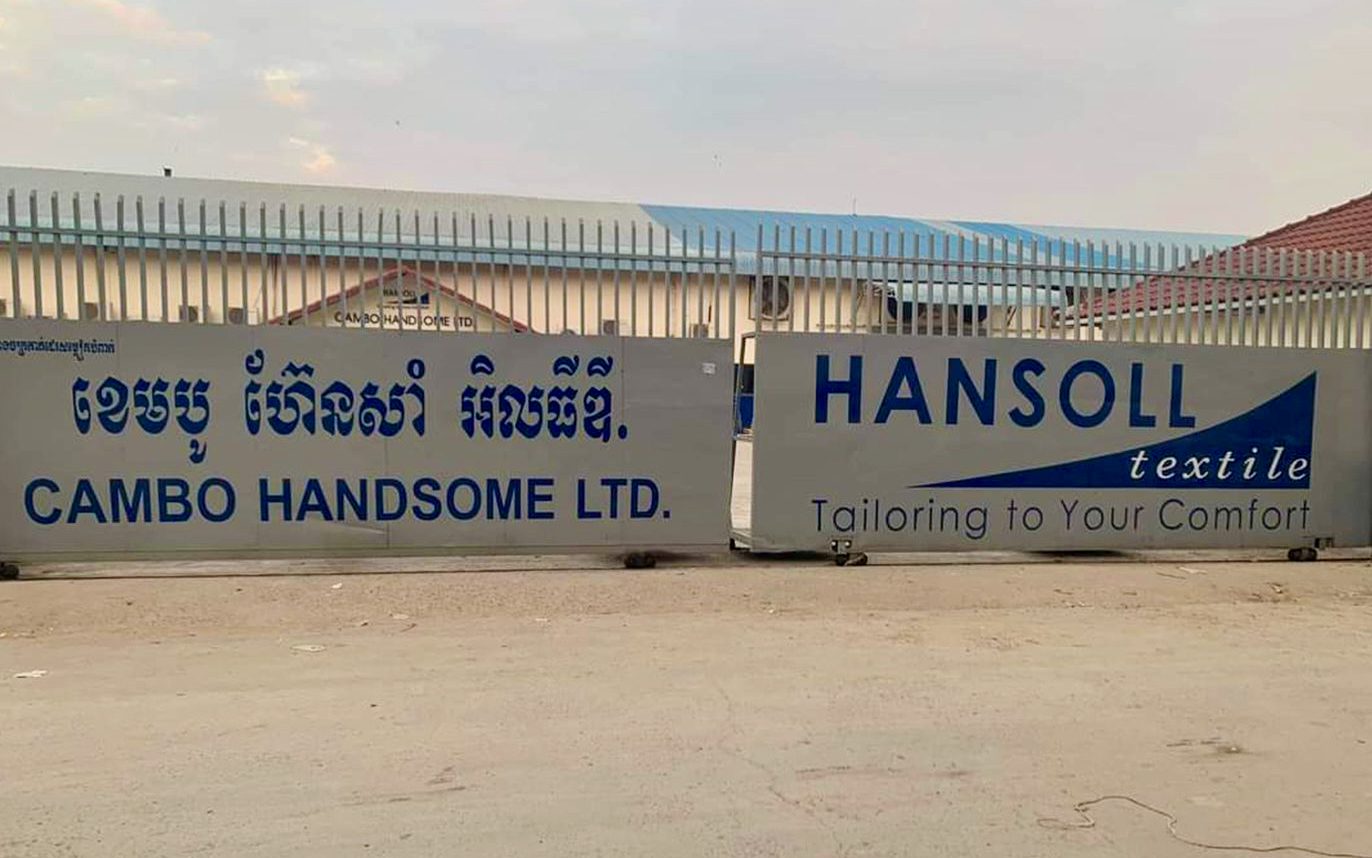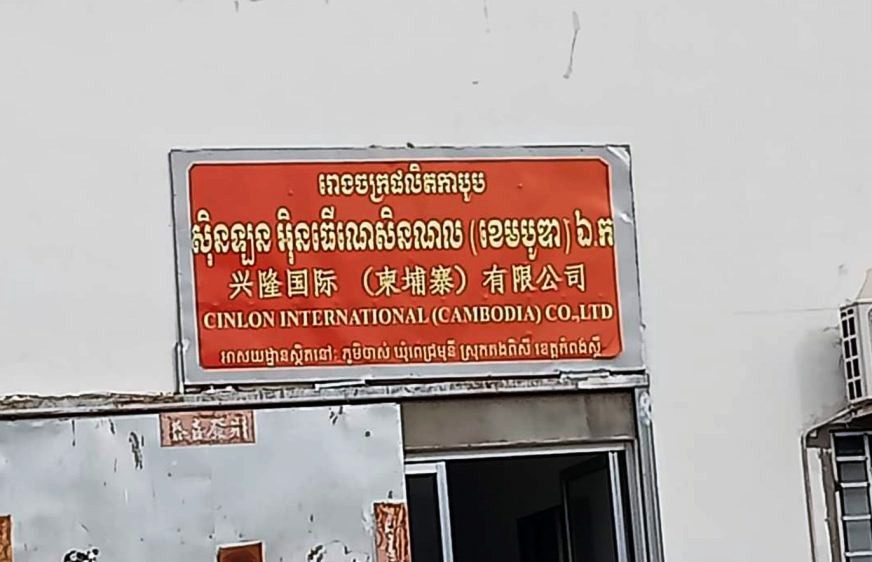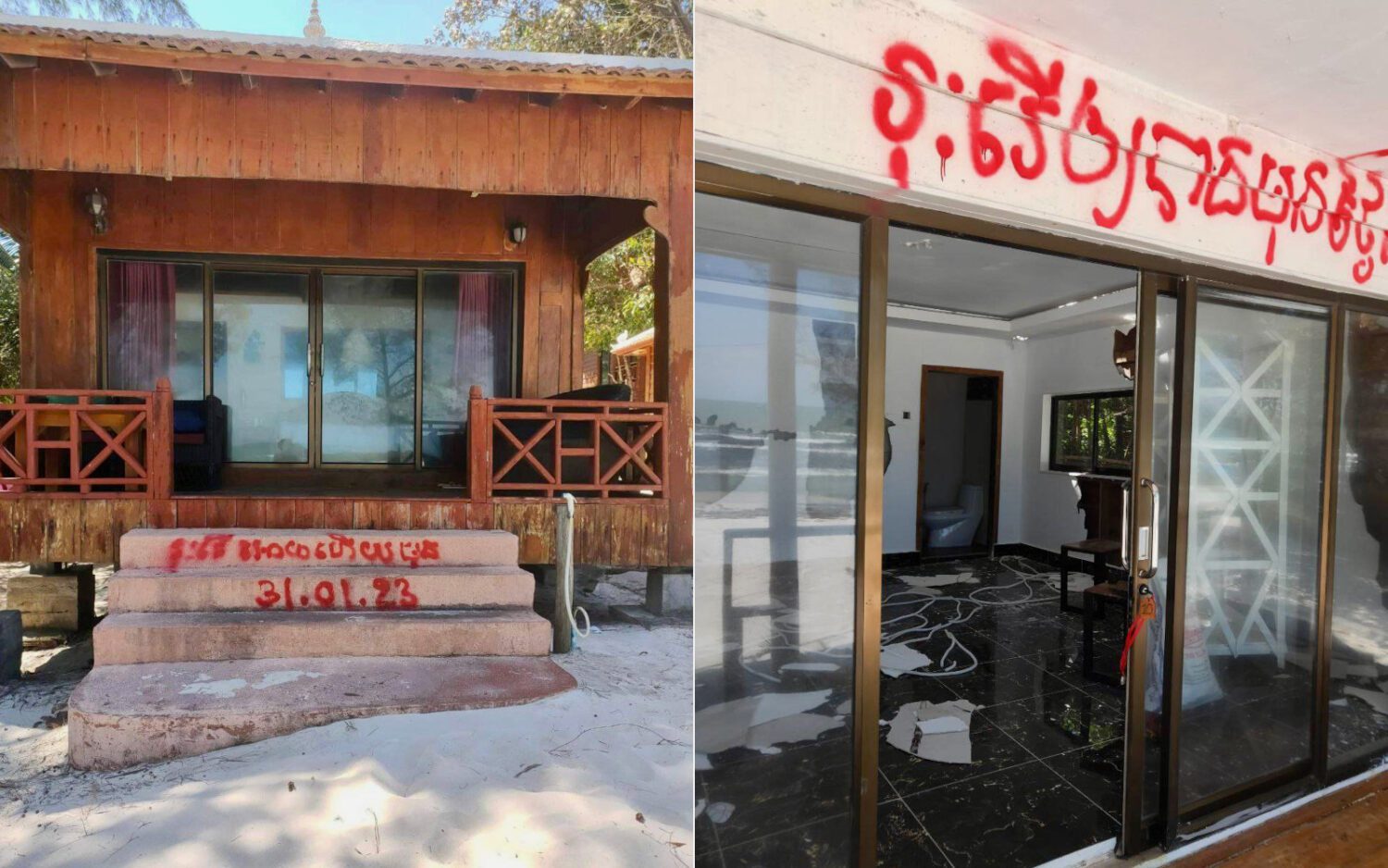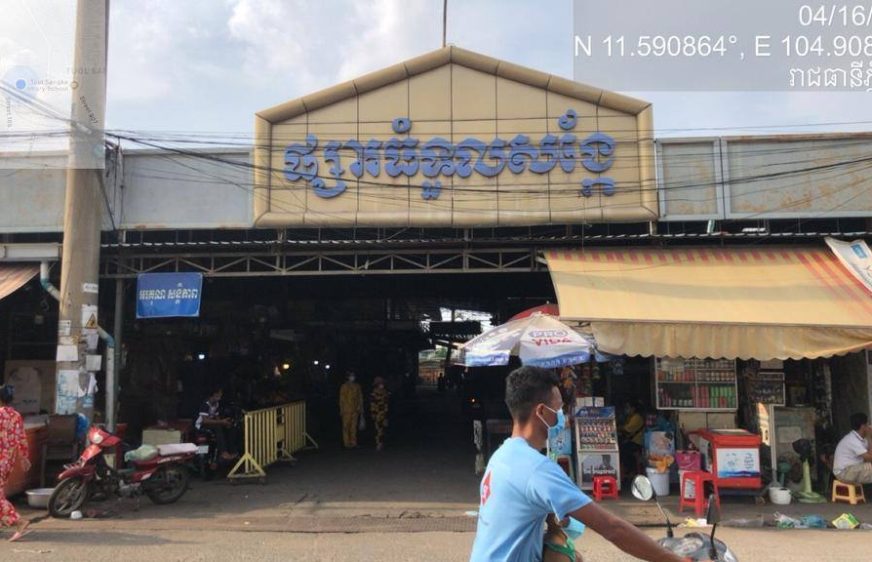It has been five months since Keo Vannak was dismissed from work for trying to set up a workers’ union at his garment factory in O’Neang Special Economic Zone in Poipet, a town which borders Thailand.
Having worked at ML Intimate Apparel since 2019, he observed that throughout the Covid-19 pandemic, workers were hired and fired with no compensation, and were treated unfairly.
“We were given 50% salary during the lockdown but if workers took a sick day because of Covid, their salary was deducted.”
“I noticed that the factory did not respect labor rights. We couldn’t raise our voice,” said Vannak, 31, whose Thai-investor factory produced lingerie and undergarments for Dutch brand Hunkemöller.
He went on to establish a labor union in February this year. “I decided to form a union when I saw so much injustice against the workers. I wanted to help them but I was fired without being given a reason.”
He returned to work in April after filing a complaint with the Ministry of Labor, but in May he became jobless again when the company refused to renew his contract. He has filed a complaint with the ministry, but there has been no word since.
Labor rights groups say workers who serve companies in SEZs can face steeper challenges when trying to assert their labor rights compared to those who work outside.
Vannak said that his former company never had a union group, only company representatives, until his formation. But in Phnom Penh where he had worked in garment factories, they “always had independent unions in there.”
Lacking Transparency
The issue with SEZs, Moeun Tola, executive director of labor group Central, said, is that it is out of the sight of the public and is not easily accessed by trade unions and NGOs.
He said there was an attempt to introduce a separate law for SEZs in 2008, whereby the zones’ operation and employment would fall outside the jurisdiction of the Labor Law.
But strong opposition by trade unions and international labor communities saw the plan set aside.
That being said, the locations of SEZs are construed as “private” and with the One-Window Service, a one-stop autonomous administration available within the zones, NGOs and trade unions are only allowed entry upon the zone manager or company’s permission.
Seeing that SEZs are private areas, concerns related to poor working conditions and protections, failure to pay minimum wage, or high temperature worksites cannot be investigated.
“Unions manage to organize some [onsite visits], but most of these are made by unions who are normally ‘friends’ of the management or the ruling party, who are not viewed as defenders of workers or members,” Tola said.
A factsheet issued by Cambodian Center for Human Rights in 2018 said workers within SEZs lacked transparency and the information to defend themselves properly. CCHR said they suffered from poor wages and working conditions and were restricted from freedom of expression, assembly and association.
Ath Thorn, president of Cambodia Labor Confederation, said although there are no restrictions to organizing independent unions, it is difficult to set one up in SEZs.
Echoing Tola, he said because the zones are private, it is not easy to access information, which means there is little known about workers being abused or harassed.
“We have organized meetings in SEZs such as Manhattan SEZ in Svay Rieng after complaints were filed when some workers were dismissed. Following that, two or three companies allowed us to organize unions,” Thorn told VOD.
However, apart from these, CLC has not been able to set up independent unions in larger SEZs, for instance Sihanoukville SEZ and Phnom Penh SEZ.
“In Phnom Penh SEZ, we tried to organize three to four unions about five years ago but they have been disbanded completely now,” he said.
Reiterating the difficulty in seeking justice without unions even outside SEZs, he cited the case of Evergreen Apparel in Phnom Penh where thousands were laid off without compensation when the company closed down three years ago. “The workers are still fighting for their compensation.”
In some instances, Thorn alleged, employers would try to limit workers’ rights even in companies with independent unions by offering short-term contracts or impose added target yields, resulting in unhealthy working conditions.
This is compounded by the fact that the workers are told they are replaceable on the basis that there are “people willing to pay for jobs in SEZs,” he alleged, noting some SEZs have been built in areas with few other jobs.
‘Without Exception’
The introduction of SEZs in late 2005 has been a boon to Cambodia, which has drawn a total of $7.5 billion worth of investments to 41 approved economic zones, as of September 30, up from just nine zones in 2014.
However, only 24 of those are currently operating.
Investors enjoy tenured tax reliefs, good logistics and public infrastructure facilities, and security.
According to a working paper by the Asian Development Bank in 2015, SEZs are intended to help developing countries attract mainly foreign export-oriented manufacturing investment that would not happen otherwise.
“The domestic conditions that would otherwise discourage this investment include poor domestic infrastructure, security of investment, costly regulations and trade restrictions.”
“The rationale of the SEZ is to reduce the costs associated with these deterrents, thereby attracting employment-creating investment into the country that would not have occurred without the SEZ,” it said.
Data by the Council for the Development of Cambodia as of September 30, showed that 175,481 workers were employed by companies operating in SEZs, which house 607 investment projects.
Declining to respond to questions on the operation of SEZs, Sok Chenda Sophea, CDC secretary-general, instead said one should consider the benefits behind the development of the zones. “There are plenty [of] interesting features [within] SEZs.”
Similarly, on the issue of labor rights, wages and the absence of unions in SEZs, Sophea told VOD: “I can tell you that the Labour Law is implemented nationwide without exception within SEZs and outside SEZs. Likewise for wages.”
‘Small Mistakes’
Back in Poipet, Vannak, the former employee of ML Intimate Apparels, spoke about the time he stood up for his colleagues, following an instruction by the management to workers to do their Covid test on a Sunday, which was a rest day.
“I proposed to the manager to do the test on a working day so we can have our rest at home. Most of the workers were really happy and clapped in support of my idea.”
“The manager came to me after that and asked if I wanted to go home or continue working here. I didn’t understand but I learned later that it was a threat,” he said.
The union saw around 100 out of 800 workers becoming members for the first time, he said, adding that he went ahead to register it with the Ministry of Labor but “they always found mistakes in the letter.”
Labor Ministry spokesman Heng Sour has not responded to questions.
Keo Channeth, 36, who works in the same SEZ in Poipet as Vannek, has also met challenges trying to start an independent union in her garment factory Hitech Apparel.
Channeth said there had been a union in her company for many years but it is not independent like hers.
So about six months ago, she and her co-workers formed an independent union and applied for official registration. They have been going back and forth on the application.
“As always it gets refused by the ministry because of small mistakes,” said the garment worker, who has been with Hitech since 2018.
Having received training on labor rights and the law, as well as attending workshops by Central, she and her colleagues know the benefits of labor unions.
She decided to set one up after her salary was deducted one day after she informed her manager that her house was underwater and could not go to work during the floods last year.
“At the time, we didn’t have an independent union. So, I organized one. There are about 6,000 workers in the factory. Our management allows workers to form a union as they are Thai nationals. They understand labor rights,” Channeth said.
She appreciated the union because it helped workers demand permission for emergency leave and annual leave, and fight against threats.
“More workers want to join but they are waiting for it to be officially registered by the ministry, which has rejected our application due to mistakes or for forgetting to put our group members’ names in,” she said, frustrated.
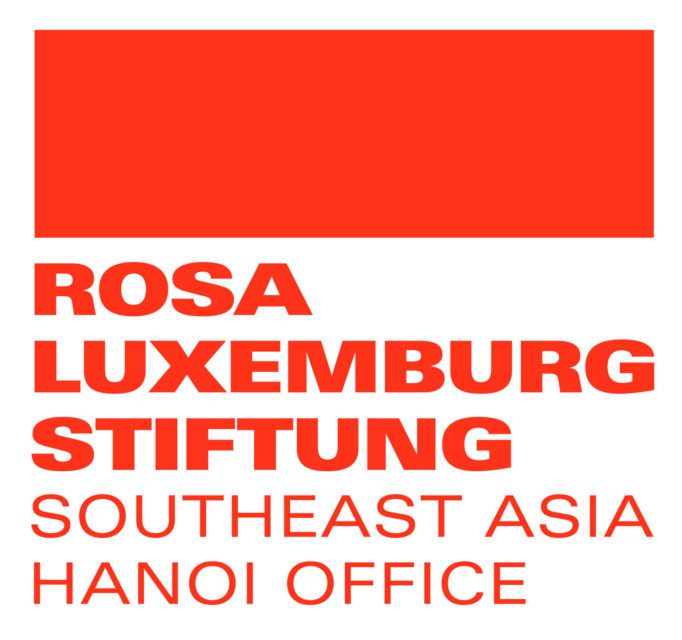 This article is produced with the financial support from Rosa-Luxemburg-Stiftung in Southeast Asia via its Hanoi office.
This article is produced with the financial support from Rosa-Luxemburg-Stiftung in Southeast Asia via its Hanoi office.


